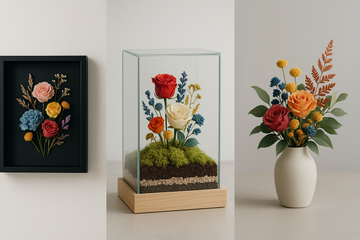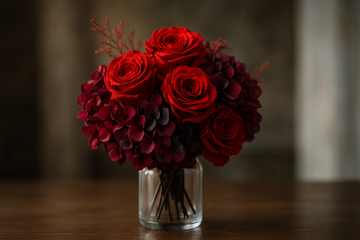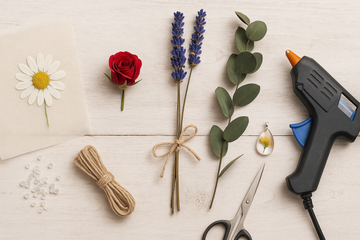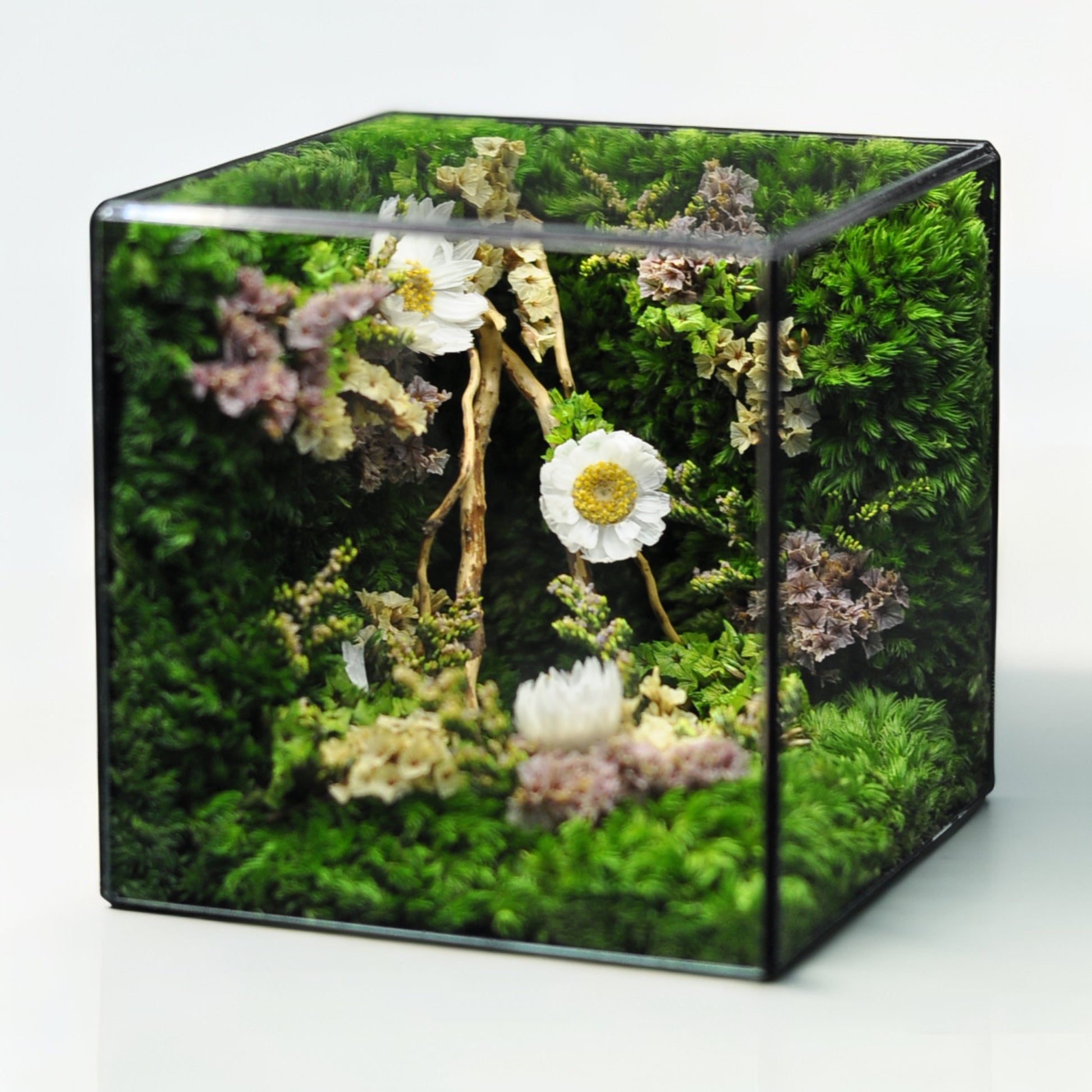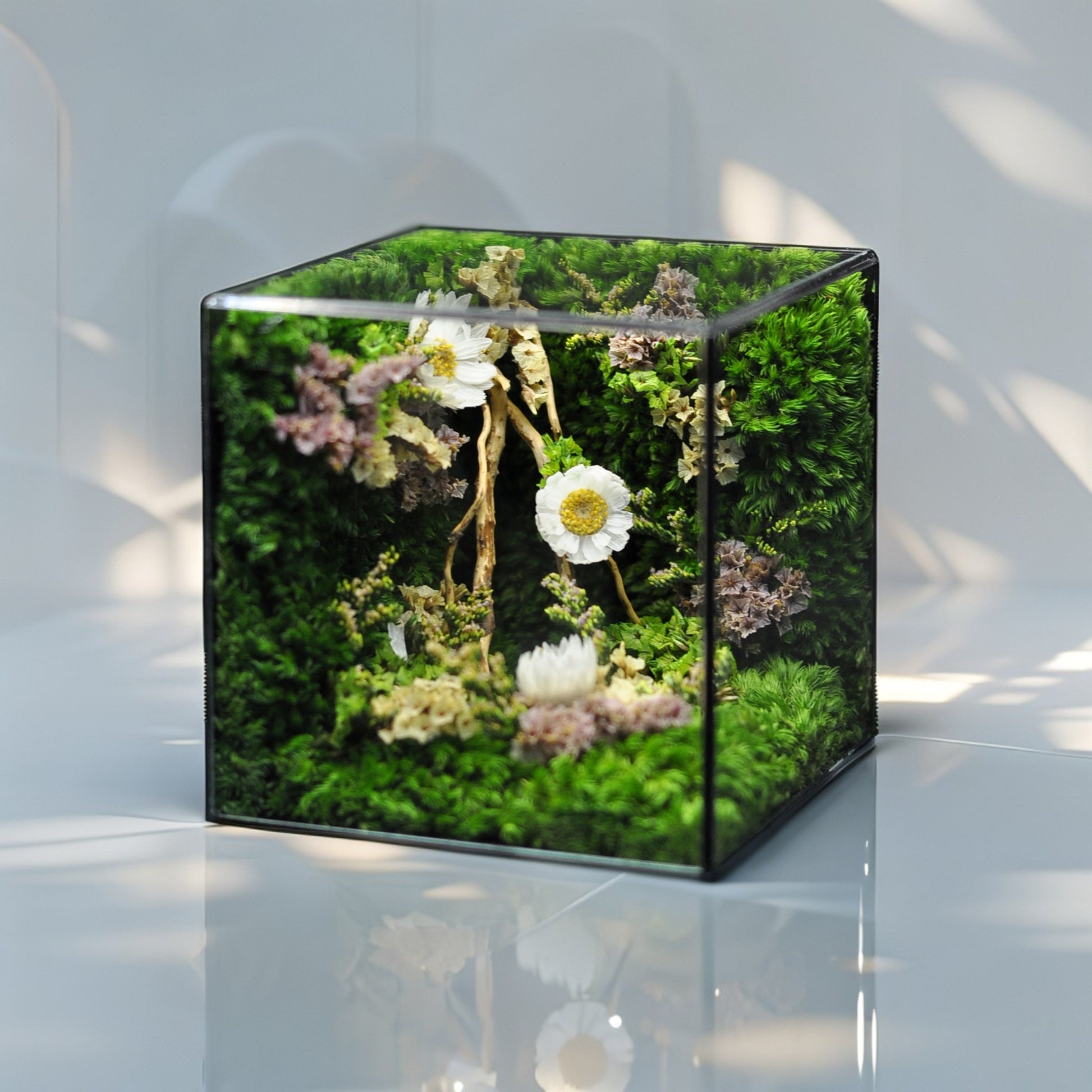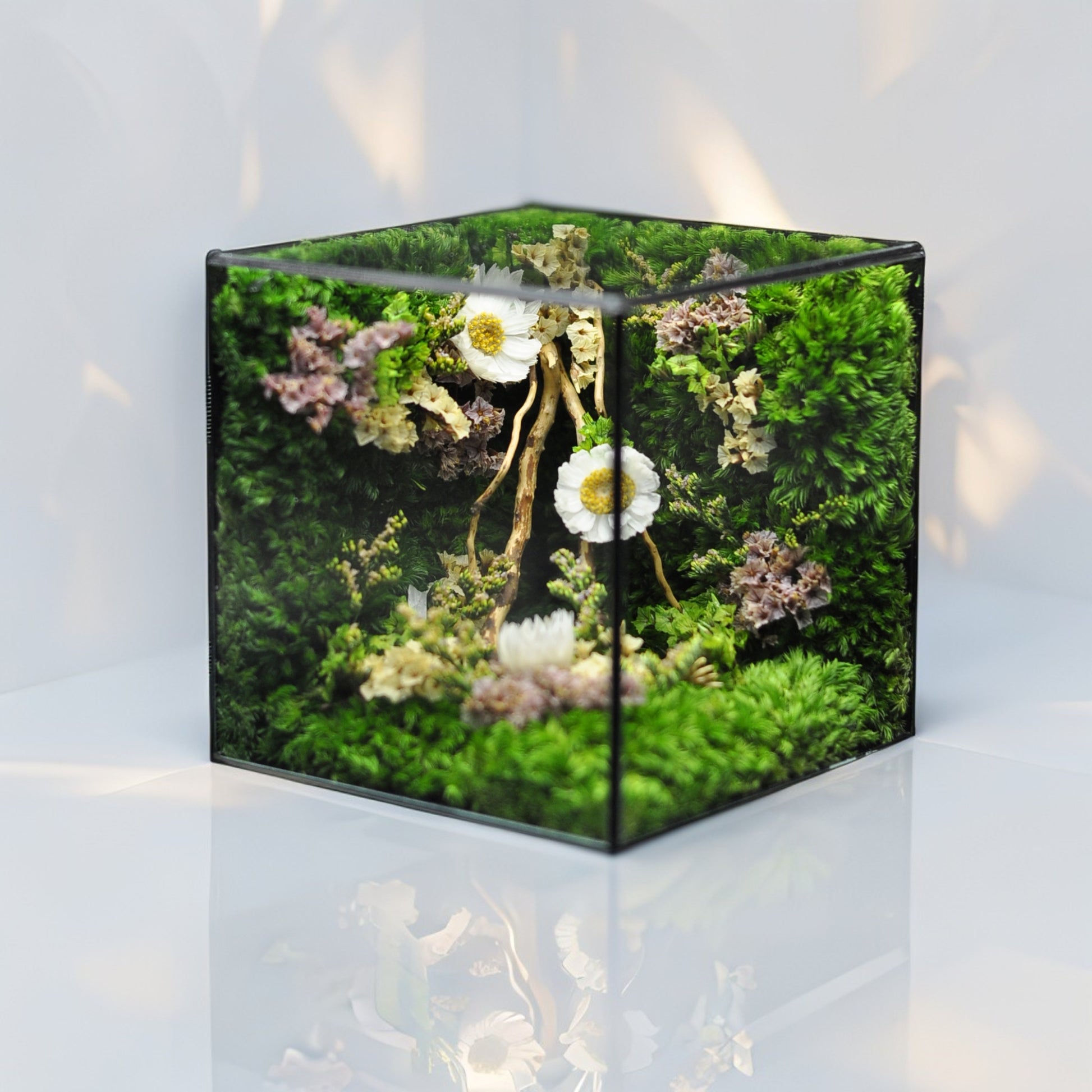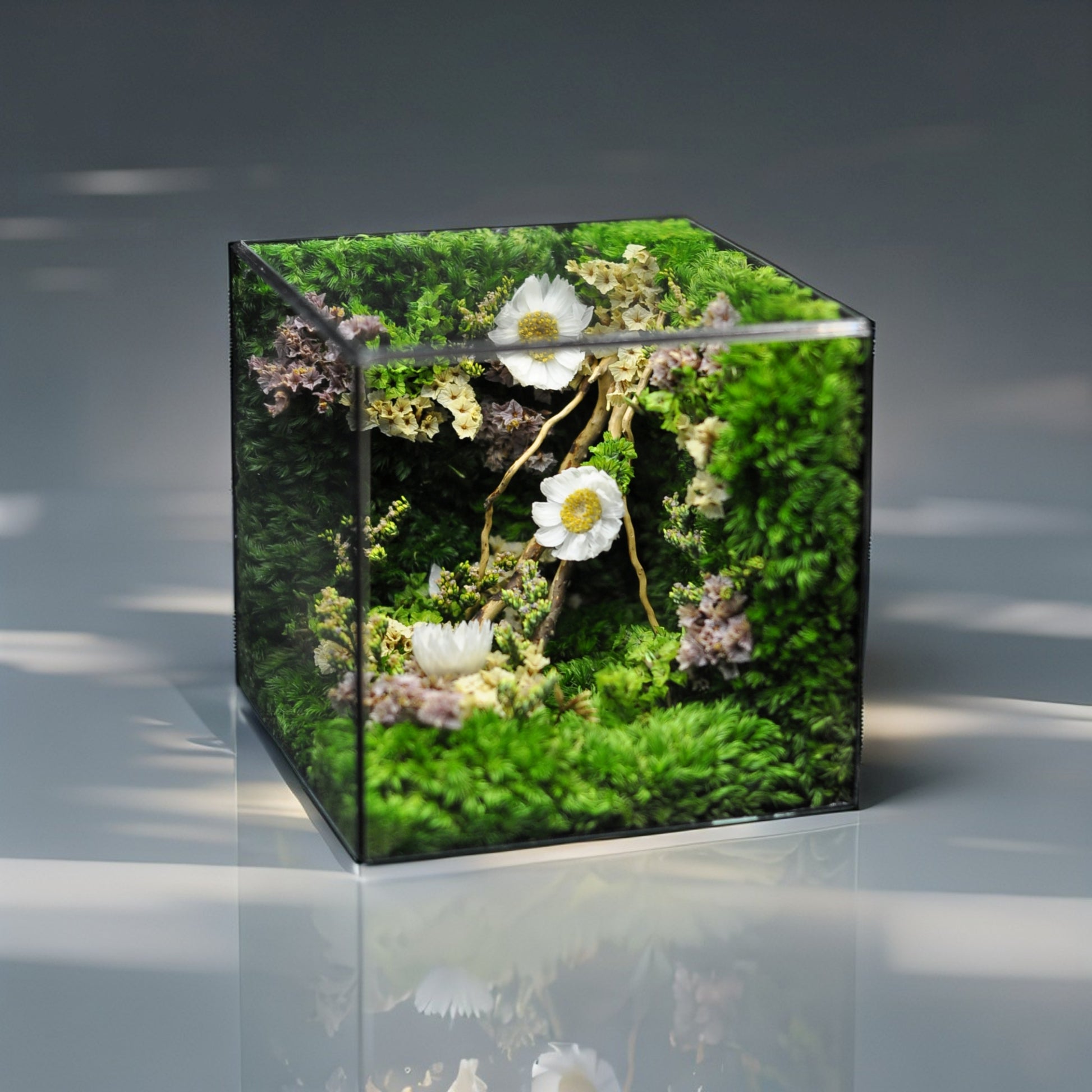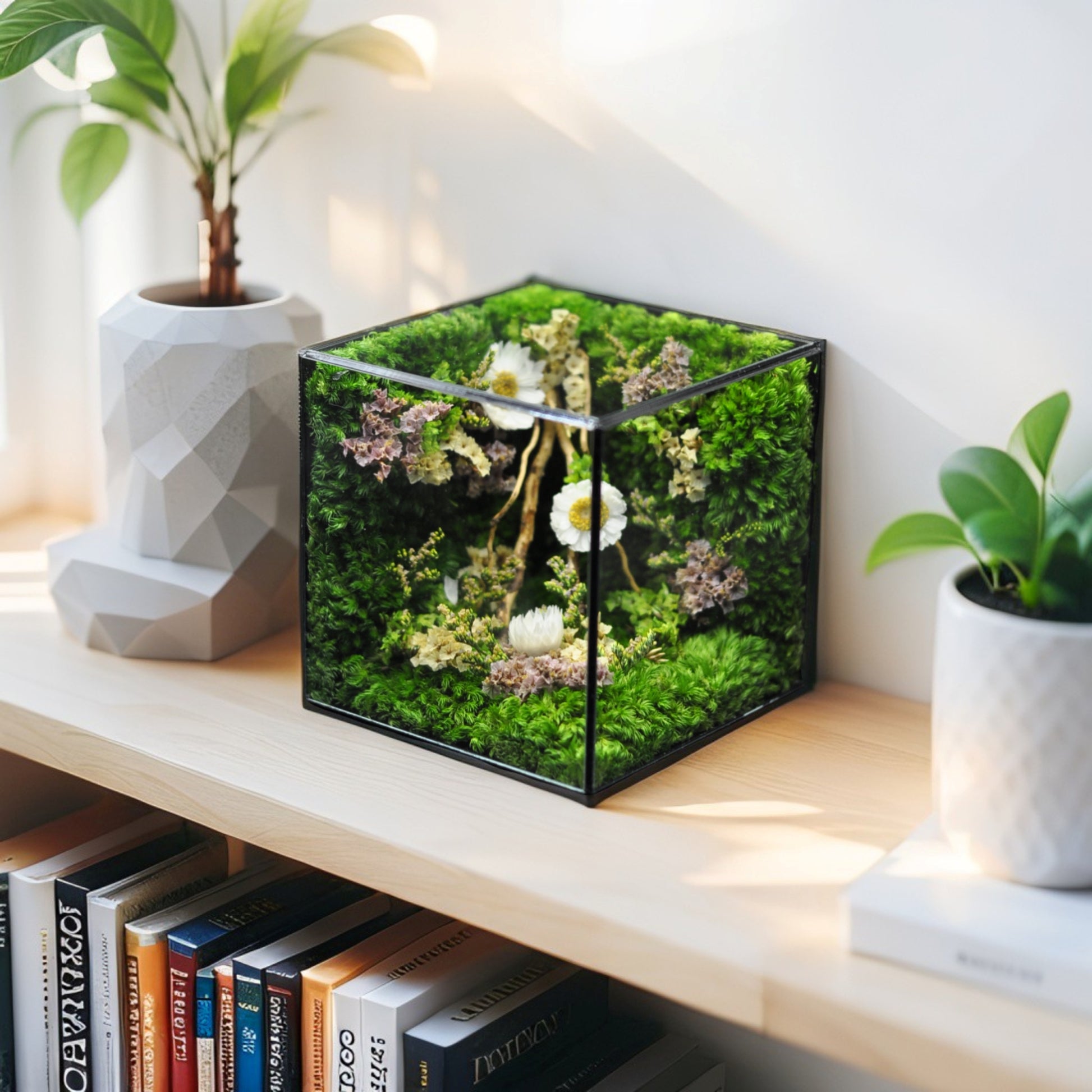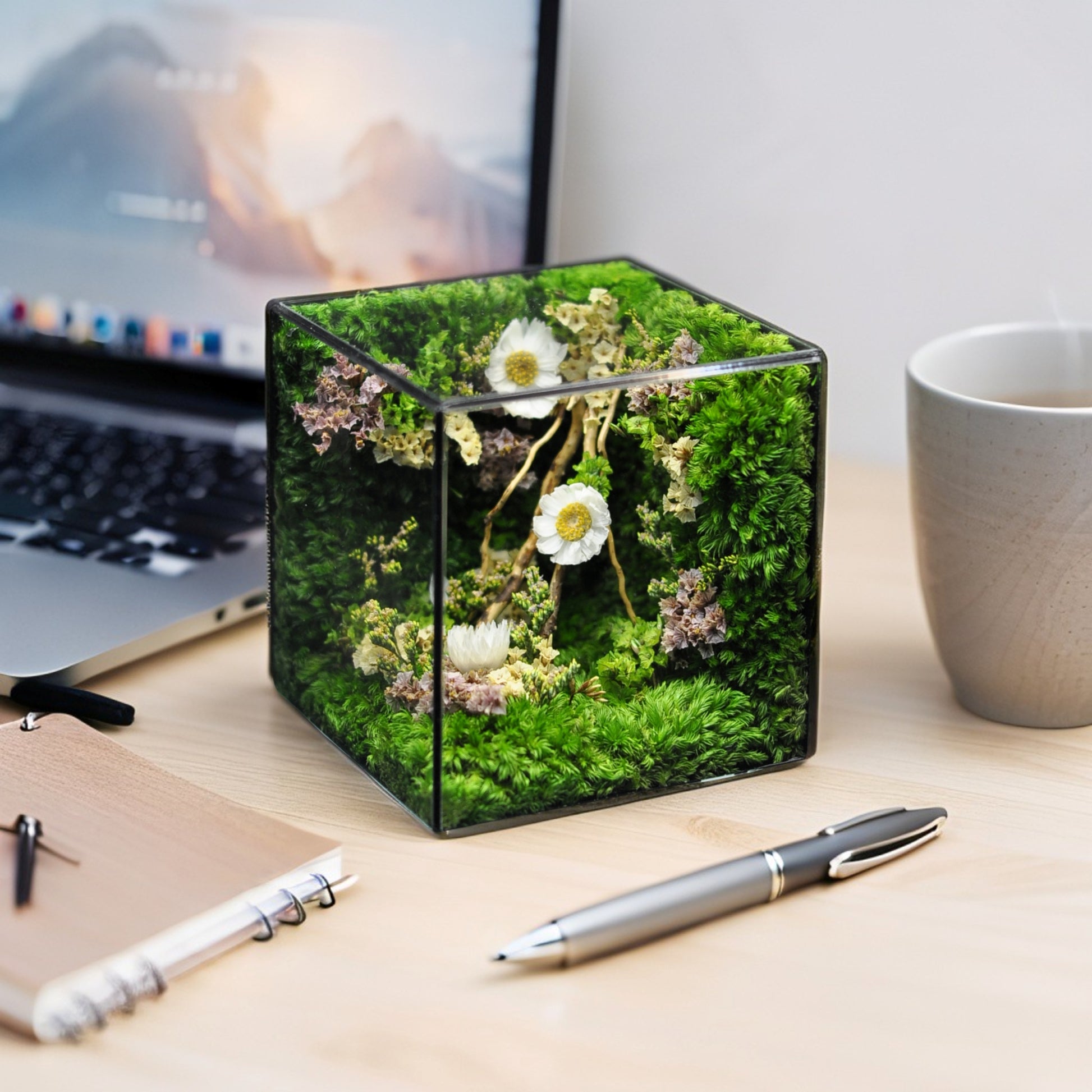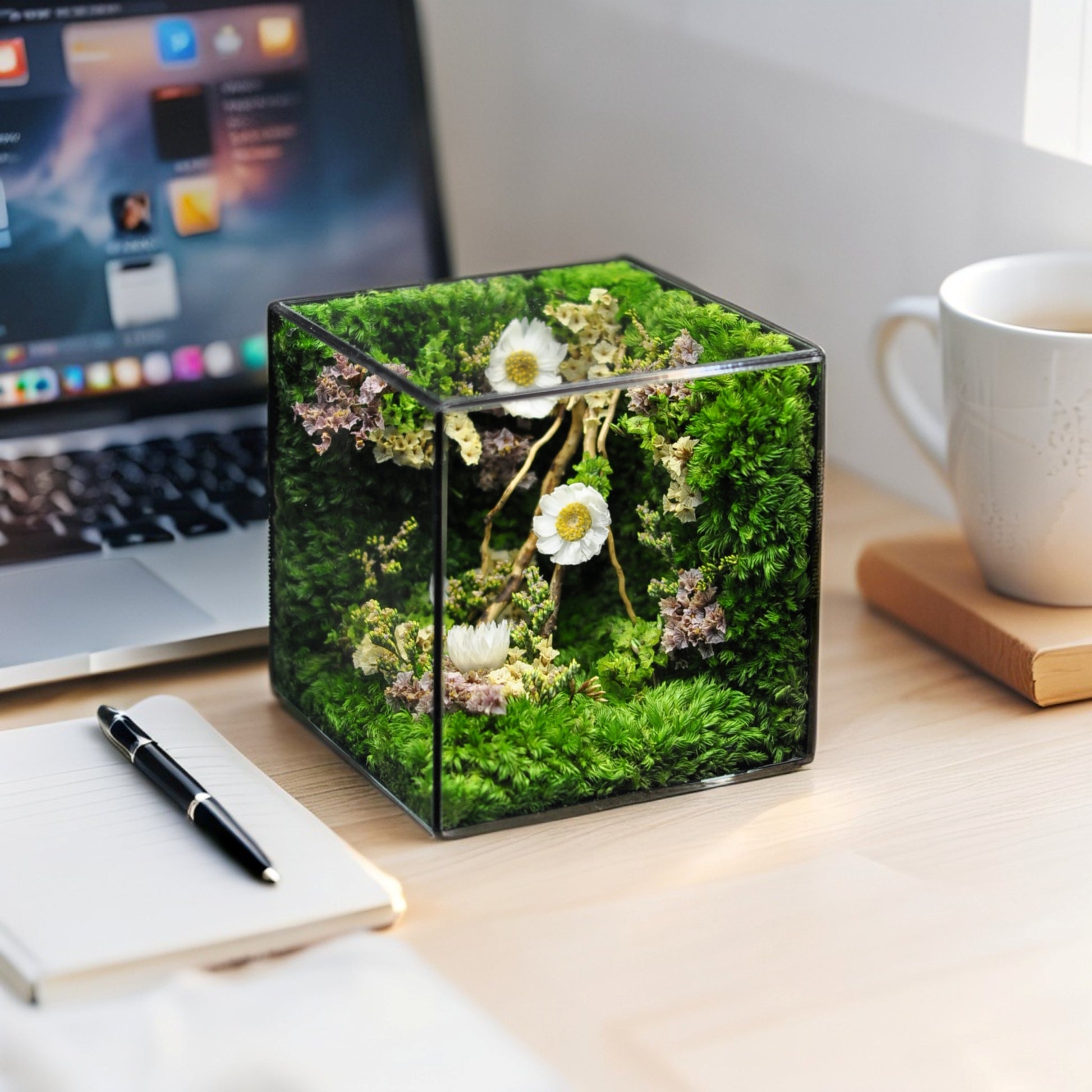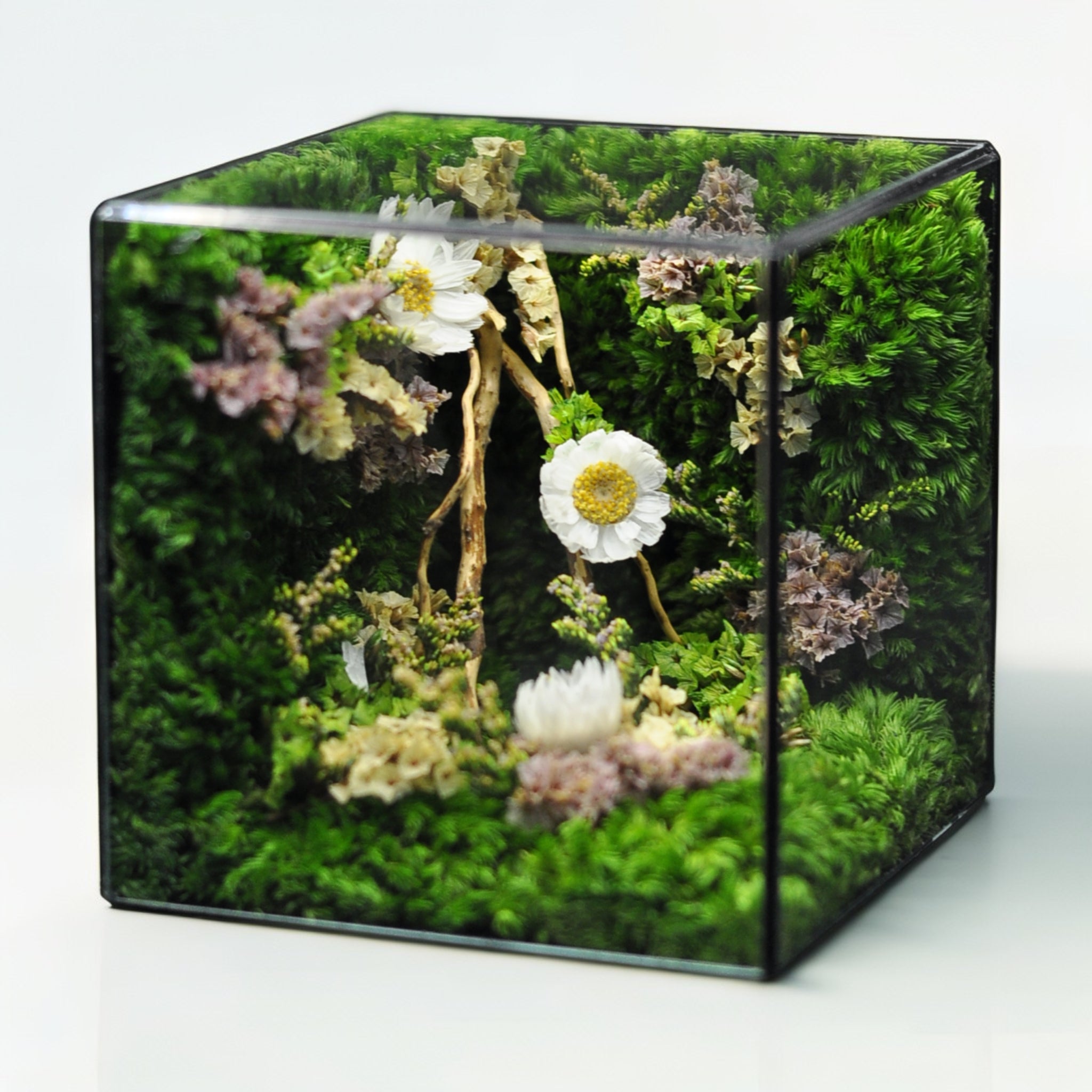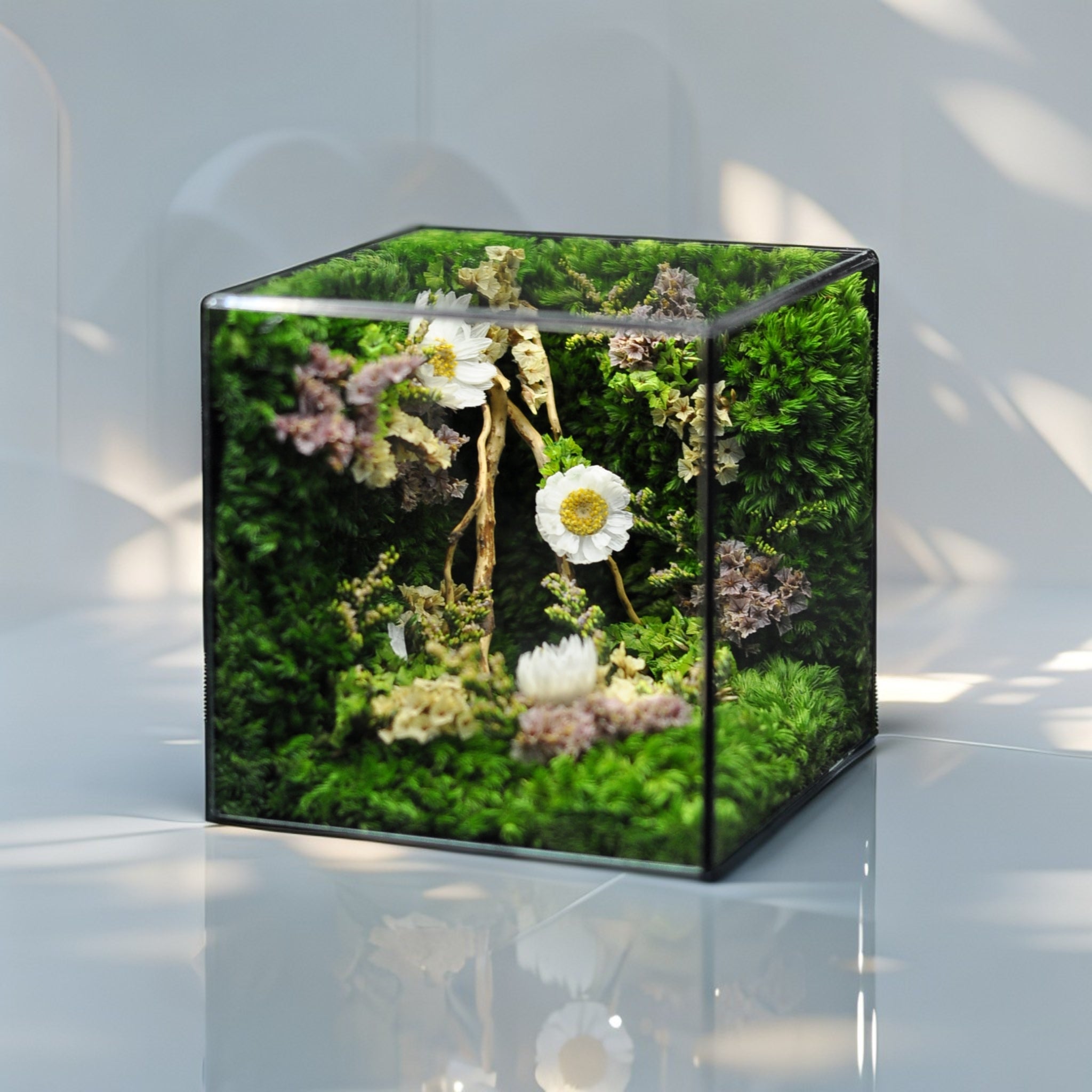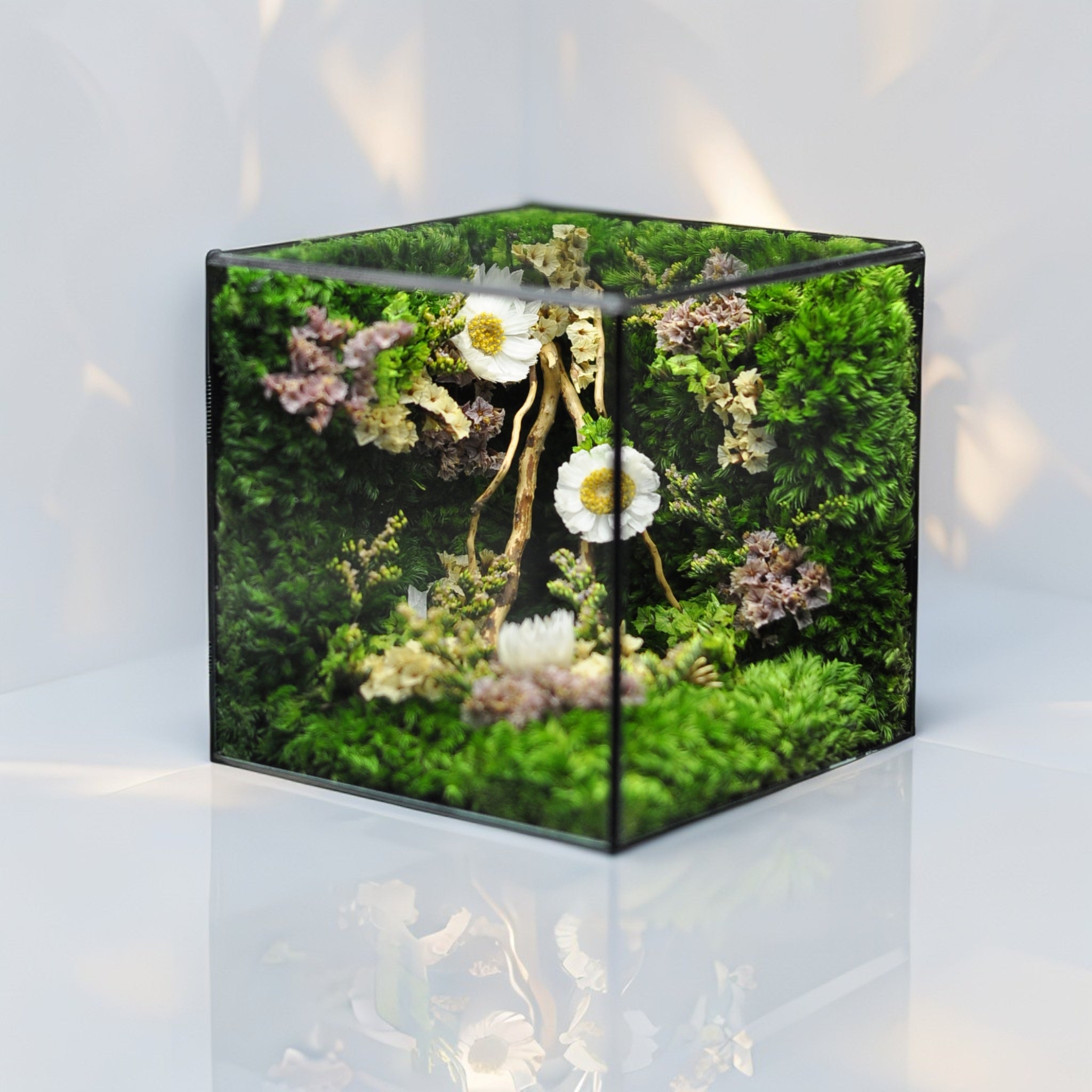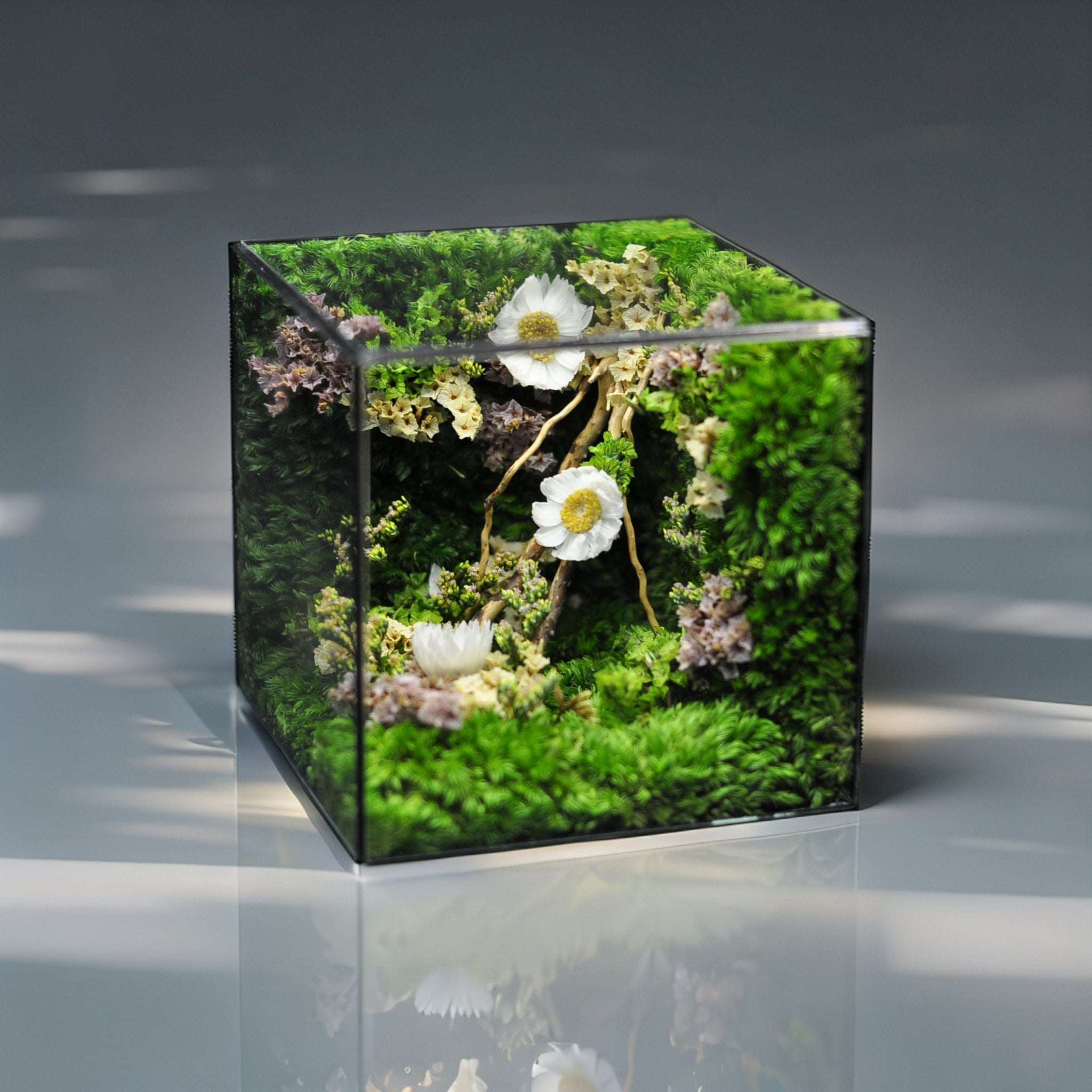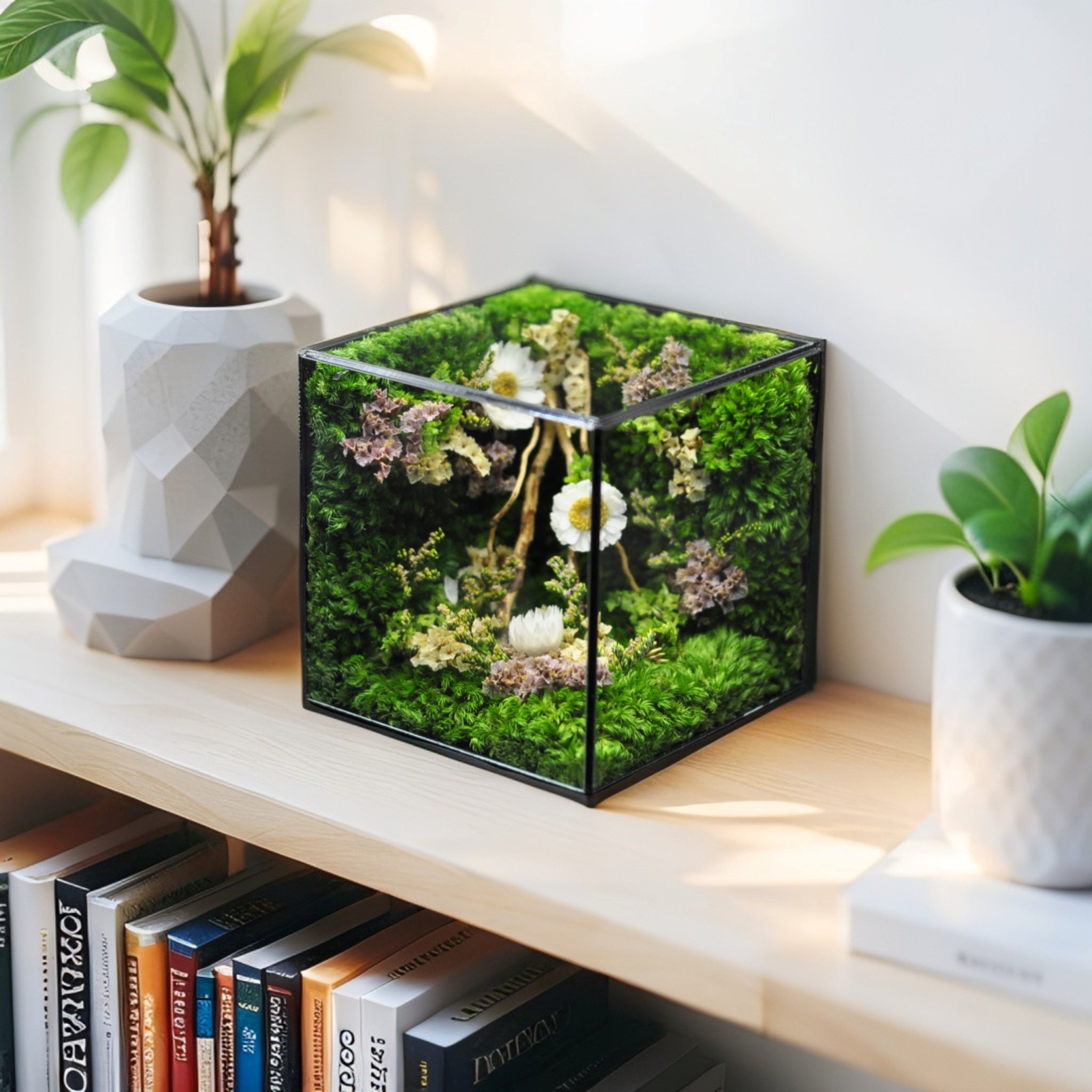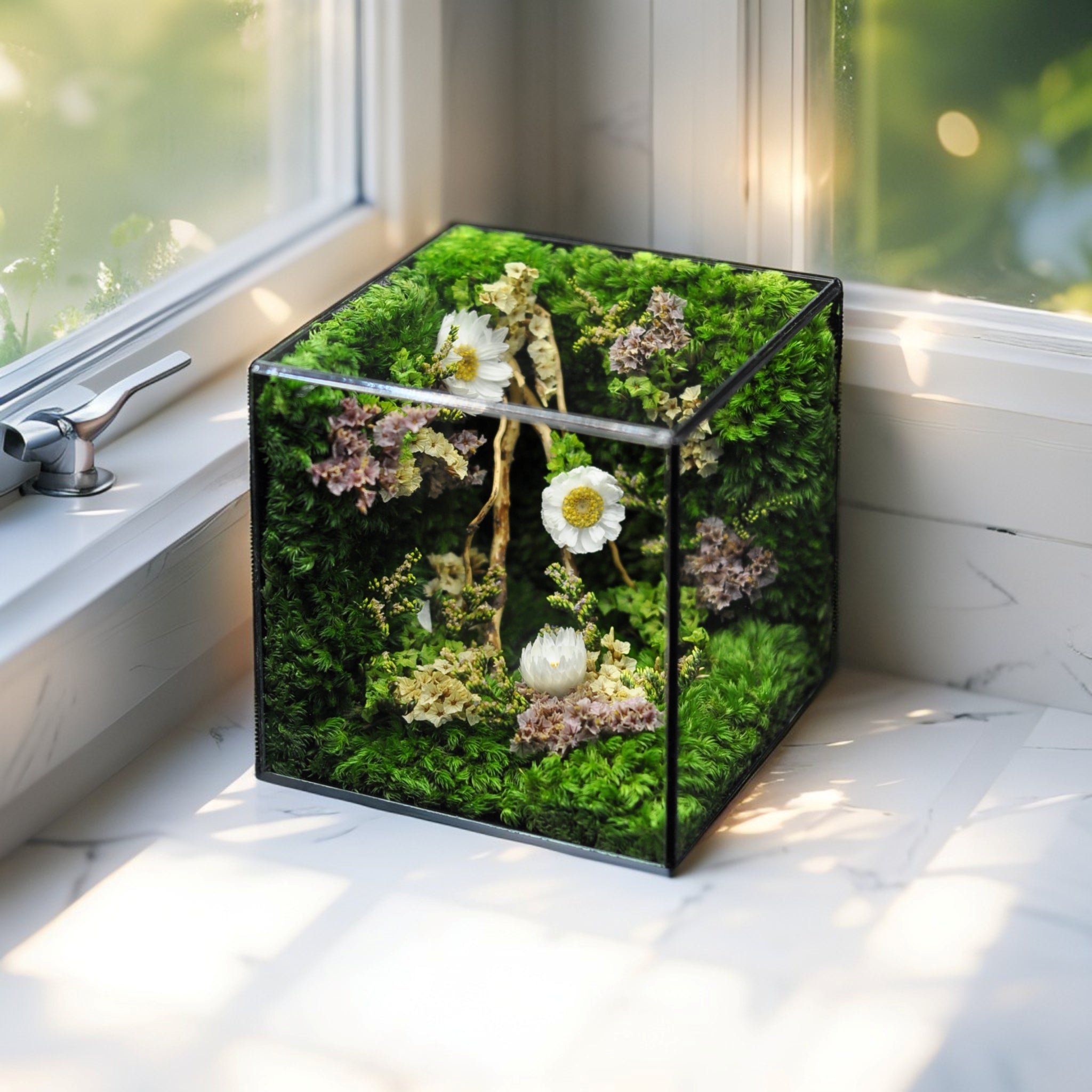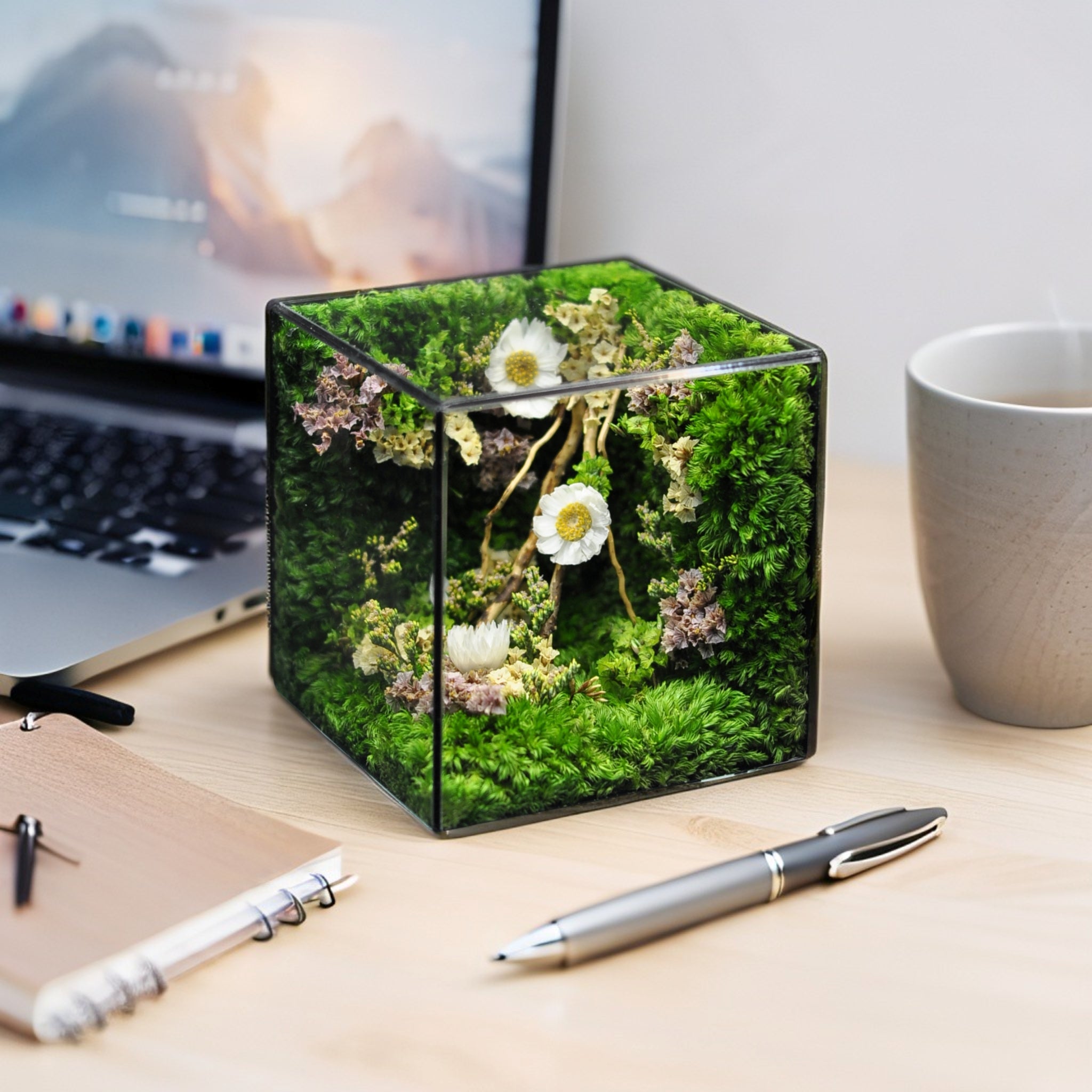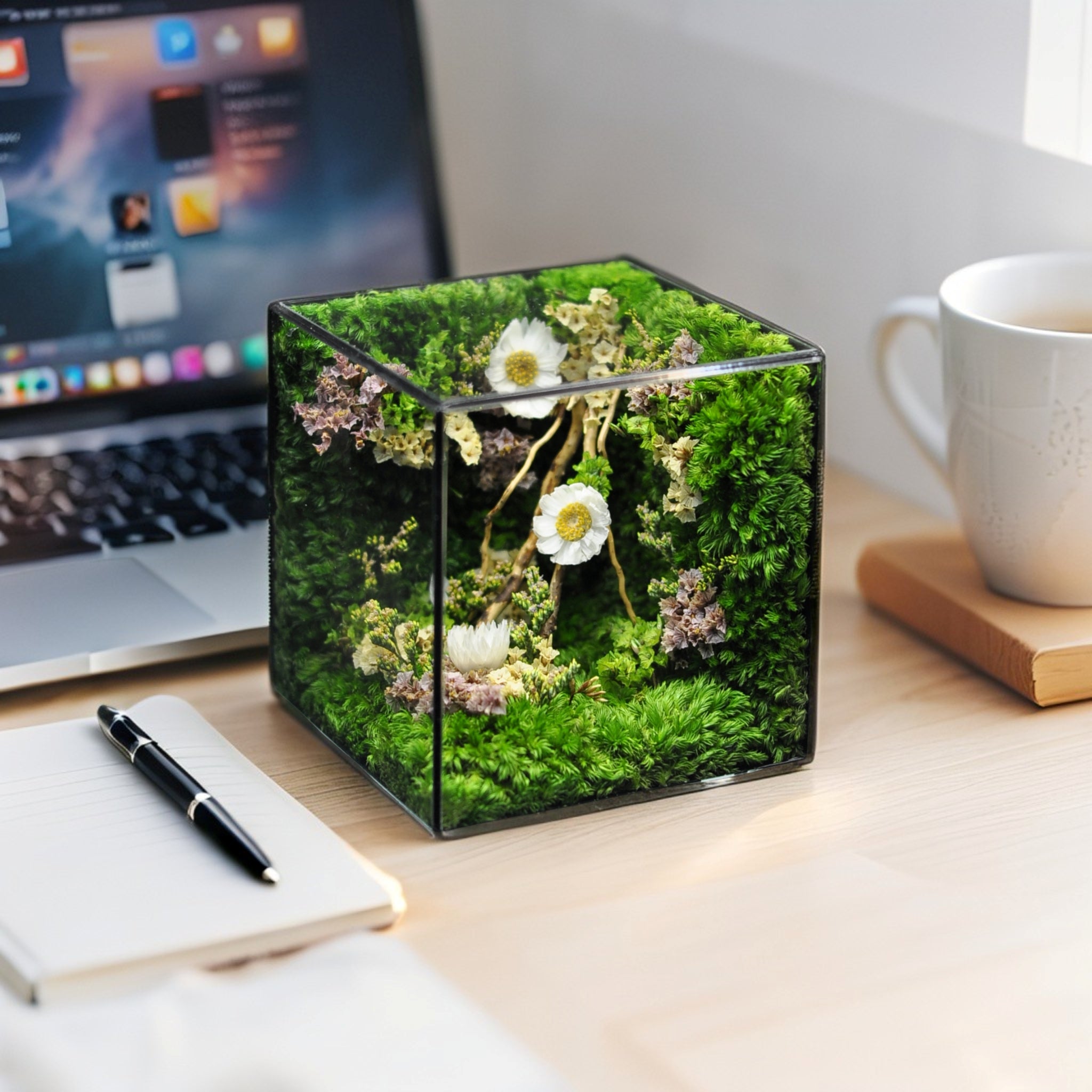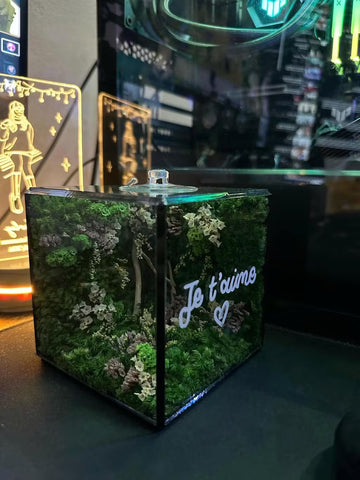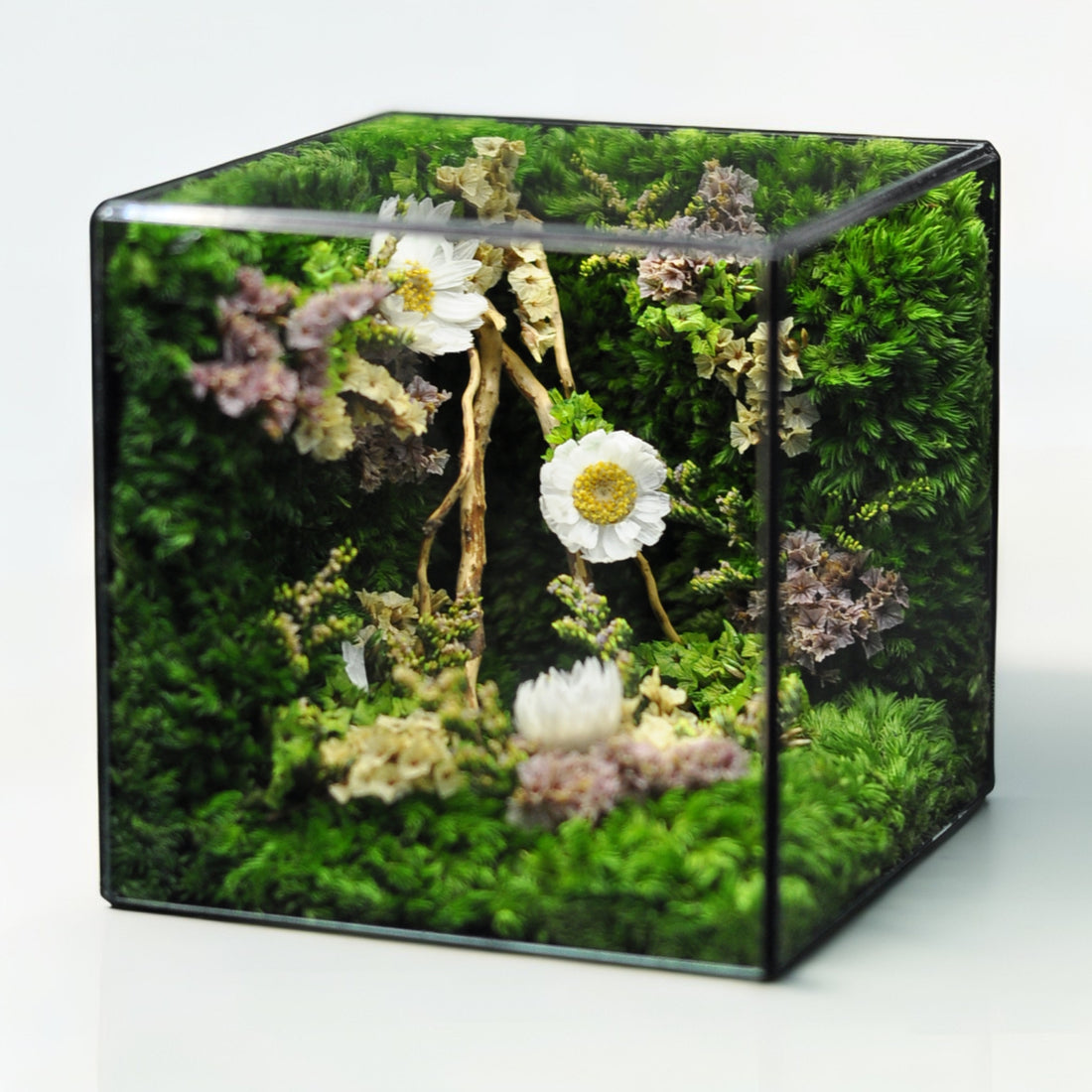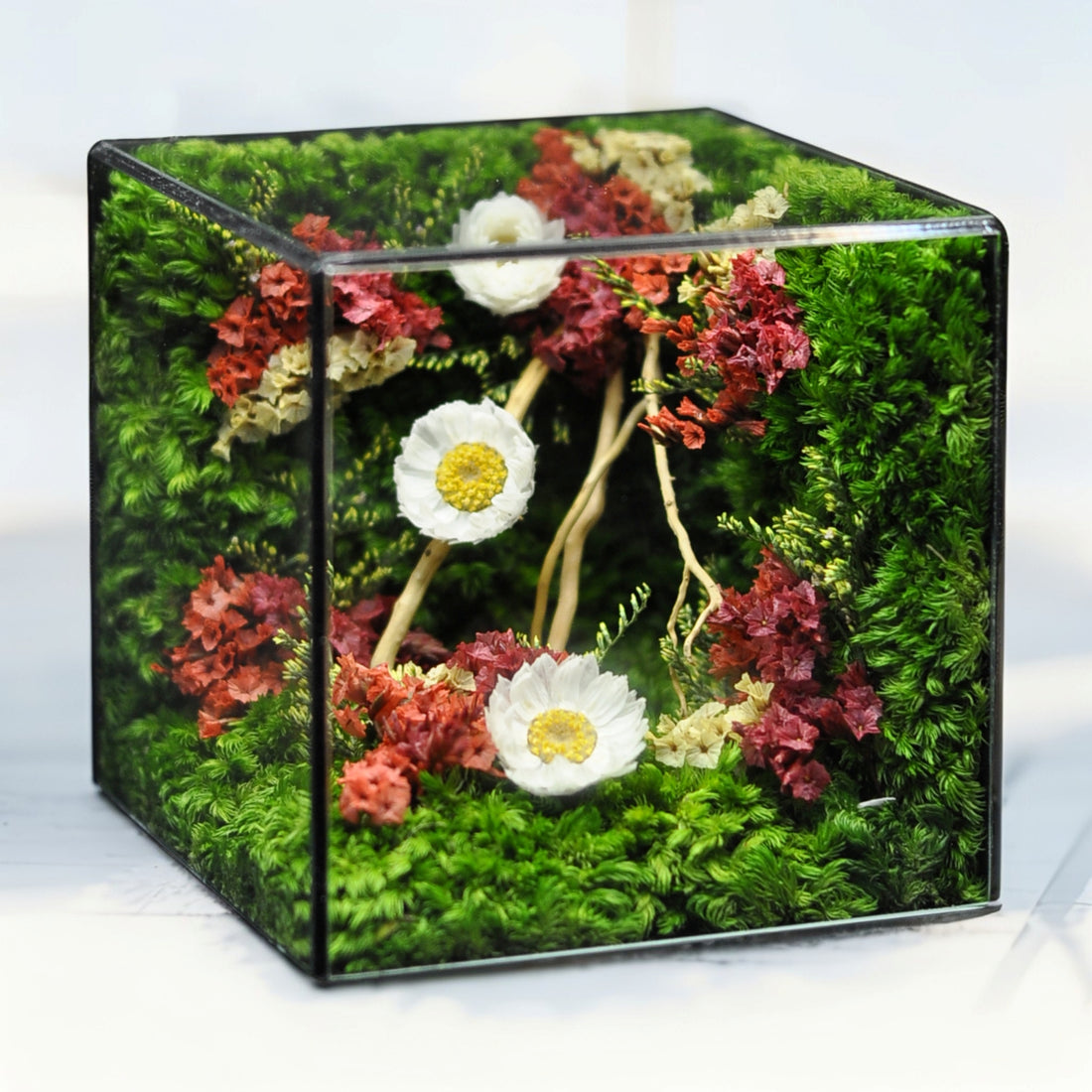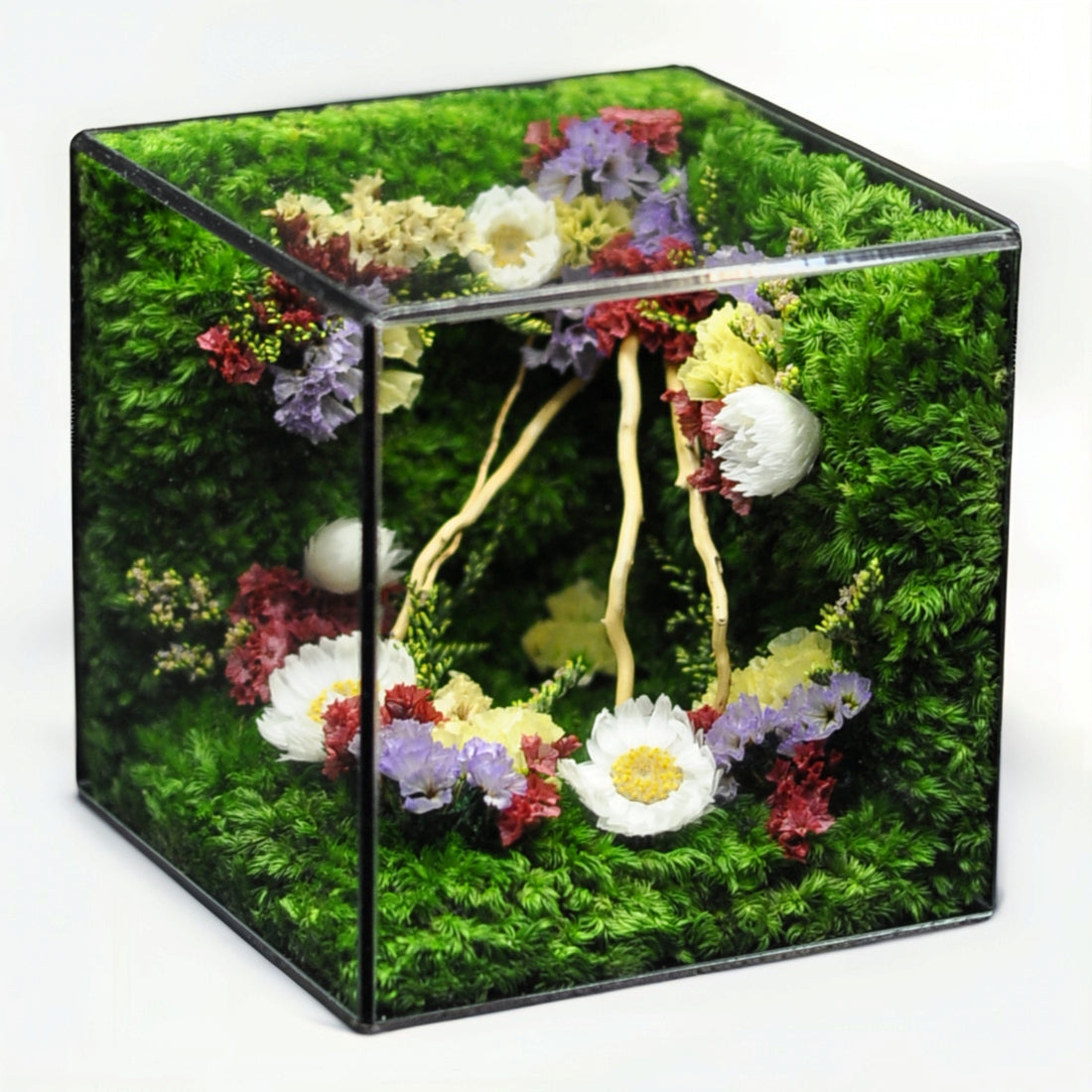Key Takeaways
- Embrace lasting beauty with preserved blooms: Unlike fresh flowers, preserved varieties offer enduring visual appeal, providing a low-maintenance way to keep floral decor beautiful for years.
- Frame your flora for unique wall art: Shadow boxes are ideal enclosures that protect delicate preserved flowers from dust while showcasing them as dimensional art against any wall.
- Protect and showcase under glass: Glass domes (cloches) create a secure, dust-free environment that highlights the delicate details of preserved arrangements, perfect for mantels or side tables.
- Create elegant centerpieces and vase displays: Standard vases and decorative containers can be used, providing flexibility for table arrangements when chosen carefully to complement the flowers and surrounding decor.
- Ensure longevity with simple care: Protecting preserved flowers from direct sunlight and excessive humidity is crucial; light dusting or using protective displays like cloches and frames helps maintain their appearance.
- Harmonize displays with your home decor: Matching container materials, shapes, and colors to your room's style ensures the preserved flower display seamlessly enhances your existing interior design.
- Master lighting for visual impact and preservation: Strategic lighting can accentuate your arrangements, but avoiding harsh direct light prevents fading over time, optimizing both aesthetics and longevity.
With these techniques, you can create stunning preserved flower displays that are not only beautiful but also thoughtfully integrated into your home. Read on for detailed steps and tips on implementing these simple methods and ensuring your preserved blooms remain vibrant for years.
Introduction
Imagine bouquets that never wilt—preserved flowers lock in nature’s beauty without the watering or mess of fresh blooms. Mastering how to display preserved flowers properly means more than choosing a vase: it’s about protecting delicate petals, highlighting textures, and blending your arrangements seamlessly into your home.
From framing blooms in shadow boxes and spotlighting them under glass cloches to crafting elegant centerpieces and optimizing lighting, these five simple techniques will help you create stunning, long-lasting floral displays. Let’s explore each method and learn how to keep your preserved flowers vibrant year after year.
How to Display Preserved Flowers: 5 Museum-Quality Decor Ideas
Want museum-quality floral art without daily watering? How do you keep preserved blooms looking vibrant year-round? Whether you’re aiming for a sleek wall gallery or an intimate tabletop vignette, these five display methods will transform preserved flowers into stunning, lasting décor. Did you know UV-filtered glass can block up to 98% of fading light? Read on to master container choice, lighting, and maintenance for picture-perfect results in any room.
Framed and Shadow Box Displays for Preserved Flowers
Choosing the Right Shadow Box: How to Display Preserved Flowers in a Shadow Box?
Select a shadow box deep enough (2–3 inches) to accommodate your blooms without crowding. Opt for UV-filtering options like Tru Vue museum glass to shield colors. Match frame color—matte black or white satin—to your décor palette: matte absorbs light and makes pastel petals pop, while glossy reflects for a fresher sheen.
Arranging Dimensional Wall Art with Preserved Flower Arrangements
Mount stems on archival acid-free foam using acid-free mounting strips or stainless-steel pins for a 3D effect. Balance bold blooms (hydrangeas, garden roses) with wispy accents (baby’s breath, statice) to craft a cohesive composition. In our loft project, pairing black ceramic frames with blush hydrangeas unified a monochrome living room for seamless style.
Hanging and Maintaining Framed Displays
Ever worried about a heavy frame coming loose? Install with wall anchors rated for your display’s weight and use adjustable picture rails for easy leveling. For safety, enlist two people during installation. Dust lightly with a soft brush and keep frames out of direct afternoon sun to prevent fading. If mounting strips lose grip over time, replace them annually to maintain stability.
With your blossoms elegantly suspended, let’s explore how glass domes can showcase blooms as intimate focal points.
Glass Dome (Cloche) Arrangements for Dried Flower Display Ideas
Selecting the Perfect Glass Dome: Best Way to Use a Cloche Dome for Dried Flowers
Choose a dome at least 2 inches taller than your tallest stem and pair it with a base material—marble for luxe, wood for warmth. Ensure the dome seals out dust; UV-coated glass slows color fade. Did you know a sealed cloche can reduce dust by 90%?
Building Secure and Stylish Cloche Displays
Anchor stems in a layer of preserved moss or decorative pebbles. Use a small dab of floral adhesive (low-heat, acid-free) to fix focal blooms, then nestle accent flowers at varying angles for depth. LED strip lighting (2700K warm or 4000K cool) hidden under the base can create subtle uplighting without heat damage.
Placement and Glass Maintenance
Ideal spots for cloches include mantels, side tables, and entryways—areas free from direct sunlight and heat vents. To clean, lift the dome and wipe the glass inside and out with a soft, lint-free cloth. Monitor indoor humidity (keep between 40–60%) and rotate cloches off high-heat areas (radiators, vents) to avoid petal yellowing. Store off-season in acid-free boxes with desiccant packs in a cool, stable environment.
Next, we’ll arrange preserved flowers as show-stopping centerpieces and vase displays.
Elegant Centerpieces and Vase Displays: Preserved Flower Arrangements
Choosing Suitable Vases and Decorative Containers: What Are the Best Containers for Displaying Dried or Preserved Flowers?
Glass vases offer sleek lines, ceramic urns bring earthy texture, and metal vessels add a modern edge. Match the vase opening to stem girth—narrow necks for single-stem focus, wide mouths for lush clusters. In our coastal retreat, pairing brushed gold urns with soft lavender sprigs accentuated the beachy neutrals.
Tips for Arranging Preserved Flowers in a Table Centerpiece
What’s the secret to a stable arrangement? Embed flower stems in floral foam or weave them into chicken wire for structure. Anchor one or two large blooms at the center, then fan out smaller stems and foliage for dynamic flow. For extra security, insert a hidden support rod into the foam to hold heavier accents upright.
Enhancing Centerpieces with Seasonal and Thematic Accents
Integrate candles, seasonal greenery, or holiday elements—think pinecones for winter, seashells for summer—to tie arrangements to your décor. Rotate accents seasonally: deep burgundy branches in autumn, pastel lisianthus in spring. No water needed—ever.
Bringing container and centerpiece magic together, let’s harmonize your displays with the rest of your home.
Harmonizing Displays with Your Home Decor: Interior Styling Tips
Matching Container Materials, Shapes, and Colors to Your Style
Coordinate container finishes with your room palette: matte black vases for minimalism, natural jute baskets for boho charm, brushed brass pots for glam. Choose vessel shapes that echo furniture lines—angular for modern, rounded for classic.
Positioning and Grouping Displays for Visual Cohesion
Create focal points by clustering single-stem vases on console tables or grouping varied heights on shelves. Balance displays across room zones—add a vase on one sideboard and mirror it with a cloche on the opposite shelf to guide the eye.
Blending Preserved Flower Display Ideas with Decor Themes
Infuse your theme—minimalist, bohemian, rustic—by integrating complementary textures: pair sleek metal frames with monochrome blooms, weave preserved eucalyptus into macramé hangers for boho flair, or nestle arrangements in reclaimed wood boxes for rustic warmth.
With styling nailed, it’s time to ensure your blooms stay vibrant for years to come.
Mastering Lighting and Maintenance: Flower Preservation Techniques for Longevity
Optimizing Lighting for Visual Impact and Preservation
Use diffused ambient light to softly illuminate arrangements, then accent with directional LED spotlights or picture lamps. Choose low-heat, low-UV LEDs to highlight textures without degrading petals. Did you know indirect lighting can prolong color vibrancy by up to 30%?
How to Maintain the Appearance of Preserved Flowers: Protecting from Dust and Sunlight
Ever worried about dust dulling your petals? Gently dust monthly with a soft artist’s brush or compressed air on low setting. For spot cleaning, wipe glass in frames and cloches with a microfiber cloth misted sparingly with distilled water—never spray directly.
Controlling Humidity and Temperature for Lasting Beauty
Keep indoor humidity between 40% and 60% to prevent brittleness or mold. Avoid placing displays near heat sources (radiators, vents) or in damp basements. Store off-season arrangements in acid-free bins with desiccant packs in a cool, dry area to maintain perfect form.
Armed with these techniques, you’ll know exactly how to display preserved flowers in any setting—transforming your home into a gallery of timeless botanical art.
Conclusion
From elegantly framed shadow boxes to intimate glass cloches, preserved flowers offer endless possibilities for museum-quality décor without the upkeep of fresh blooms. By choosing UV-filtered glass, anchoring blooms securely, and balancing textures—from bold hydrangeas to delicate baby’s breath—you’ll craft striking wall art, centerpieces, and vignettes that seamlessly blend with any style. Strategic lighting and mindful maintenance—gentle dusting, humidity control, and low-heat LEDs—ensure lasting vibrancy. Whether you prefer minimalist metal vases, rustic wood bases, or sleek ceramic urns, these display techniques let you showcase preserved botanicals as timeless focal points. Ready to elevate your living space? Experiment with these ideas and watch your home transform into an enduring gallery of natural beauty.
Frequently Asked Questions (FAQ)
Q: How do you maintain the appearance of preserved flowers?
A: Gently dust monthly with a soft artist’s brush or low-setting compressed air, wipe glass display cases with a microfiber cloth misted sparingly with distilled water, keep indoor humidity between 40% and 60%, avoid heat sources and direct sunlight, and store off-season arrangements in acid-free bins with desiccant packs in a cool, dry area.
Q: What are the best containers for displaying dried or preserved flowers?
A: Glass vases provide sleek lines, ceramic urns add earthy texture, and metal vessels offer a modern edge. Match the vase opening to stem girth—narrow necks for single stems and wide mouths for lush clusters.
Q: How can I protect my preserved flowers from dust and sunlight?
A: Use UV-filtering or museum-grade glass in frames and domes, keep displays out of direct sunlight, dust monthly with a soft brush or low-pressure compressed air, and regularly wipe glass surfaces with a microfiber cloth.
Q: How do I choose and set up a shadow box for preserved flowers?
A: Select a shadow box 2–3 inches deep with UV-filtering glass like Tru Vue, choose a matte black or white satin frame to suit your décor, mount stems on archival acid-free foam using acid-free strips or stainless-steel pins, and install securely with wall anchors and picture rails.
Q: What’s the best way to create a glass dome (cloche) display for preserved flowers?
A: Choose a dome at least 2 inches taller than your tallest stem on a marble or wood base, seal out dust with UV-coated glass, anchor stems in preserved moss or decorative pebbles using acid-free floral adhesive, and add hidden low-heat LED strip lighting for subtle uplighting.
Q: How do I arrange preserved flowers into a stable table centerpiece?
A: Embed stems in floral foam or weave them into chicken wire for support, anchor one or two large blooms at the center, fan out smaller stems and foliage around them, and insert a hidden support rod for heavier accents.
Q: How can I optimize lighting for preserved flower displays to maintain vibrancy?
A: Use diffused ambient light to softly illuminate arrangements, accent them with low-heat, low-UV LED spotlights or picture lamps, and rely on indirect lighting to prolong color vibrancy by up to 30%.

